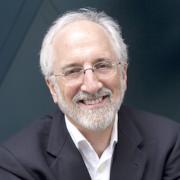Closing the Knowledge Gap on 'Open Source'
I'm hearing more and more about "open source." What's that? How does it apply to business sustainability?
I'm hearing more and more about "open source." What's that? How does it apply to business sustainability?
Gil: Open Source software provides freely distributed software that user communities can modify, improve and freely distribute. The success of the Linux operating system is the most widely known example of the open source challenge to the traditional, "patent everything" approach to intellectual property. Those who dismissed it as a curiosity and a hobby for geeks started thinking differently when growing markets like China and Brazil began a systematic shift away from Microsoft Windows in favor of Linux.
The Open Source Initiative says:
The folks at WorldChanging.com are among the many sites keeping an active watch. Alfredo Romeo, founder of Spanish micro-car company Blobject, says:
The larger question -- does open source depend on avid volunteers, or does it have economic legs? -- has yet to be answered definitively. But the potential creative power and speed of active, passionate user networks is a force worth considering -- whatever business you're in.
* * * * *
Got A Question?
Send your questions about environmental management issues to [email protected]
We can't guarantee that we'll answer every question, but we'll try.
-------
Gil Friend, systems ecologist and business strategist, is president and CEO of Natural Logic, Inc. -- offering advisory services and tools that help companies and communities prosper by embedding the laws of nature at the heart of enterprise. Sign up online to receive his monthly column via email. Read Gil's blog here.
Gil: Open Source software provides freely distributed software that user communities can modify, improve and freely distribute. The success of the Linux operating system is the most widely known example of the open source challenge to the traditional, "patent everything" approach to intellectual property. Those who dismissed it as a curiosity and a hobby for geeks started thinking differently when growing markets like China and Brazil began a systematic shift away from Microsoft Windows in favor of Linux.
The Open Source Initiative says:
The basic idea behind open source is very simple: When programmers can read, redistribute, and modify the source code for a piece of software, the software evolves. People improve it, people adapt it, people fix bugs. And this can happen at a speed that, if one is used to the slow pace of conventional software development, seems astonishing.But it's not just software that's being open sourced. We're now seeing open source pharmaceuticals, engineering, copyright, fabrication, scientific publishing, and encyclopedias.
We in the open source community have learned that this rapid evolutionary process produces better software than the traditional closed model, in which only a very few programmers can see the source and everybody else must blindly use an opaque block of bits.
The folks at WorldChanging.com are among the many sites keeping an active watch. Alfredo Romeo, founder of Spanish micro-car company Blobject, says:
With proprietary software, innovation comes from the people in marketing . . . .But with open source, innovation comes from the guy who is really in the market. It comes from someone who knows the city.Worldchanging.com is a fervent advocate of open source approaches:
A reasonable respect for intellectual property is crucial (adding, as Lincoln said, the fuel of self-interest to the fires of invention), but there's something very wrong with a world in which crops, energy systems, essential drugs, access to information, methods for providing clean water, and so on are priced outside the reach of billions simply because of the legacy of past development patterns. They are proprietary knowledge.How can you make money giving things away? Some open source software producers provide their software for free, but charge for value added enhancements, implementation and consulting. Some provide basic functionality at for free, but charge for enhanced functionality
The greatest strength of the open source model is that it is explicitly non-proprietary. It is a direct antidote to legacy ownership of key ideas, because the core concept is that no one should own core concepts. No corporation, no nation, no person can claim ownership over the core concepts in an open source project in order to demand royalties or restrict its use. No one using open source-built medicines, for example, would ever die of AIDS because some Big Pharma executive in New York or Berlin decided that distributing cheap drugs was too great a risk to their patents.
The larger question -- does open source depend on avid volunteers, or does it have economic legs? -- has yet to be answered definitively. But the potential creative power and speed of active, passionate user networks is a force worth considering -- whatever business you're in.
* * * * *
Got A Question?
Send your questions about environmental management issues to [email protected]
We can't guarantee that we'll answer every question, but we'll try.
-------
Gil Friend, systems ecologist and business strategist, is president and CEO of Natural Logic, Inc. -- offering advisory services and tools that help companies and communities prosper by embedding the laws of nature at the heart of enterprise. Sign up online to receive his monthly column via email. Read Gil's blog here.





